know draw by hand before 3d animation
Since the offset blithe motion-picture show rolled onto our screens in the early on 1900s, animation quickly became an integral function of our viewing pleasance—evolving from jumpy stick figures in Fantasmagorie to high-detailed motion pictures like Toy Story 4, with lighting and cinematography playing a central part in its evolution.
Lighting in animation has go an art course in itself, not leap by physics or reality in the same way traditional filmmaking is. Although the basis of the lighting derives predominantly from traditional filmmaking, it offers consummate stylistic freedom with where and how the lights are used, enhancing the cinematography of animatic films and Tv shows.
Unfortunately, blitheness has always been restricted past technology and budget. While technology today is advancing at a more rapid pace, this was not always the case—specially when it comes to 2nd animation.
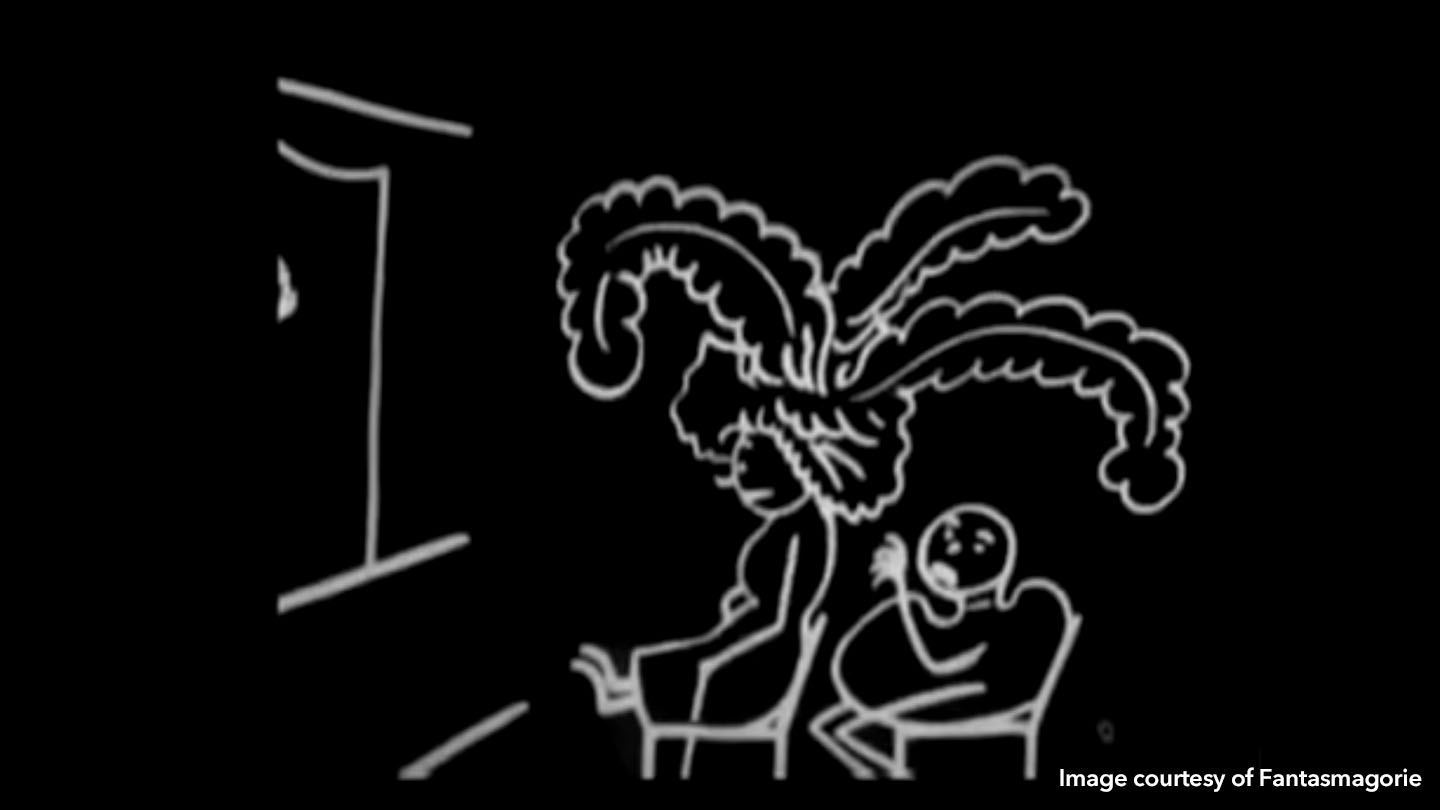
A hand-drawn masterpiece
Traditionally, 2D animations were hand-drawn, frame-past-frame, and then put together to create a moving image. It's for this reason that 2nd animation doesn't share the same lighting and shading techniques as 3D animation—you can't light 2D in the same manner you can with 3D. Instead, second animations focus on silhouettes and composition.
Take this early example of one of Disney'due south first animations, Steamboat Willie. There is no low-cal or shade seen in the animation, and none of the characters are lit either. This is because the characters were fatigued on cels, and so superimposed onto a fixed background. The background epitome does announced to offering some variation in the light and shade, but this is likely due to it existence filmed over a class of tonal variation lath and not necessarily deliberate.
Later on, it became standard practice to use painted backgrounds for 2D animations, intricately painted with the finest details—the beloved children's archetype Bambi is a good case of this.
Its background is beautifully and cinematically painted. It has strong lighting queues and uses color to emphasize mood or direct the viewers' attention. Just, none of the animal characters in the moving-picture show are lit. Instead, if any of them are in the light, they are painted lighter—or darker if they are in shadows. While this attempts to give the illusion that they are being lit, it consequently means that all the cinematography of the film is driven past the painted background, and not by any course of low-cal.
Jumping forward to the Fleischer brothers' Superman cartoons, it's clear that there is specific usage of lite and shadow in their blitheness, with shadows being painted on when sure low-cal is used. While it may seem crude to some, the Superman cartoons were some of the starting time animations to add this sense of lite and shadow to their characters.
What's more than, the animations were heavily influenced by the flow in which they're set up, with the Superman graphic symbol almost being a Film Noir version of himself. These Noir elements are interlaced with science fiction and art deco—which was a pop mode in the 1940s—to create visually beautiful cartoons in both tone and mood.
The employ of moody pools of low-cal, silhouetted figures and shadows all derived from Film Noir and add to more serious undertones of the animation. This is contrasted with the deep colour palette the animations apply, instead of opting for the more traditional blackness and white that is frequently used in Moving-picture show Noir. It created a new, more serious side to Superman which is miles away from the alive-action Superman of the 1950s/60s.
Even today, directors and cinematographers take influence from these cartoons, which considering not only the fourth dimension, only the lack of upkeep the Fleischer brothers' had, is somewhat incredible.
Just getting to the finished masterpiece didn't come up without its complications.
Each grapheme inside the drawing had a shadow, which meant that not simply did the characters themselves have to be animated, but their shadows did as well. This doubled the work of the animators and, in turn, doubled the production cost, making it overall more expensive than any other animations being fabricated at that time.
Production price, alongside schedule and technological advancements, play a big function with what is viable when making a 2D animation. Frequently, the upkeep didn't let for the amount of precision seen within Superman. Instead, lighting artists were express to the engineering they had at the time, and couldn't snap things into place similar they can today, significant they had to utilise other techniques in order to perfect their shots. But, this and then meant in that location was less fourth dimension to spend on the cinematography and final overall await of a 2d animation.
More than 2-Dimensional
Even today, the complications of budget and schedule are still prevalent when it comes to creating 2d animations. While the animation industry has come a long way technologically speaking, creating 2D animations still takes a long time to perfect and budgets don't allow for extended schedules. Even with Klaus—a mod 2D pic that follows the origin of Santa Claus—the team were working upward to the wire.
For Klaus, a 2nd style of animation was chosen equally the quondam-fashioned fashion added to the actuality of the moving picture and the story. Merely, the way it was created differed greatly to traditional 2D animation, the artistic team using AI driven tools, alongside added 3D elements to help them produce and light the film and its characters.
The new program KLaS (Klaus Low-cal and Shadow)—which was specifically created for the blitheness—tracked the movements of the characters, so whatsoever light or shadows would motility with them. Afterward, the artists would refine these by mitt, and add in whatever smaller artistic details to the characters. This added more than depth to the grapheme which would not have been possible in classic 2D animations like Bambi.
This was further amplified by the use of 3D elements for the scenic layouts and specific objects within the flick. These made the characters stand out from the background, so they didn't end upwards looking like the groundwork had been painted on behind them—this also beingness the reason that many people argue the pic is 3D.
With second, finding the balance between budget, artistic desires and commercial realities has always been a fine art. However, it'due south clear from modern 2d animations like Klaus, that advisedly crafted fashion and utilize of cinematography pay off in the end and create visually beautiful animations that add to the overall emotion of the viewers and fully immerses them into the blithe globe. It besides allows audiences to imagine what early on 2d animations could have looked similar if they had the same engineering science, simply the styles and the way these were produced in the early on years was a reaction to price, technique and time.
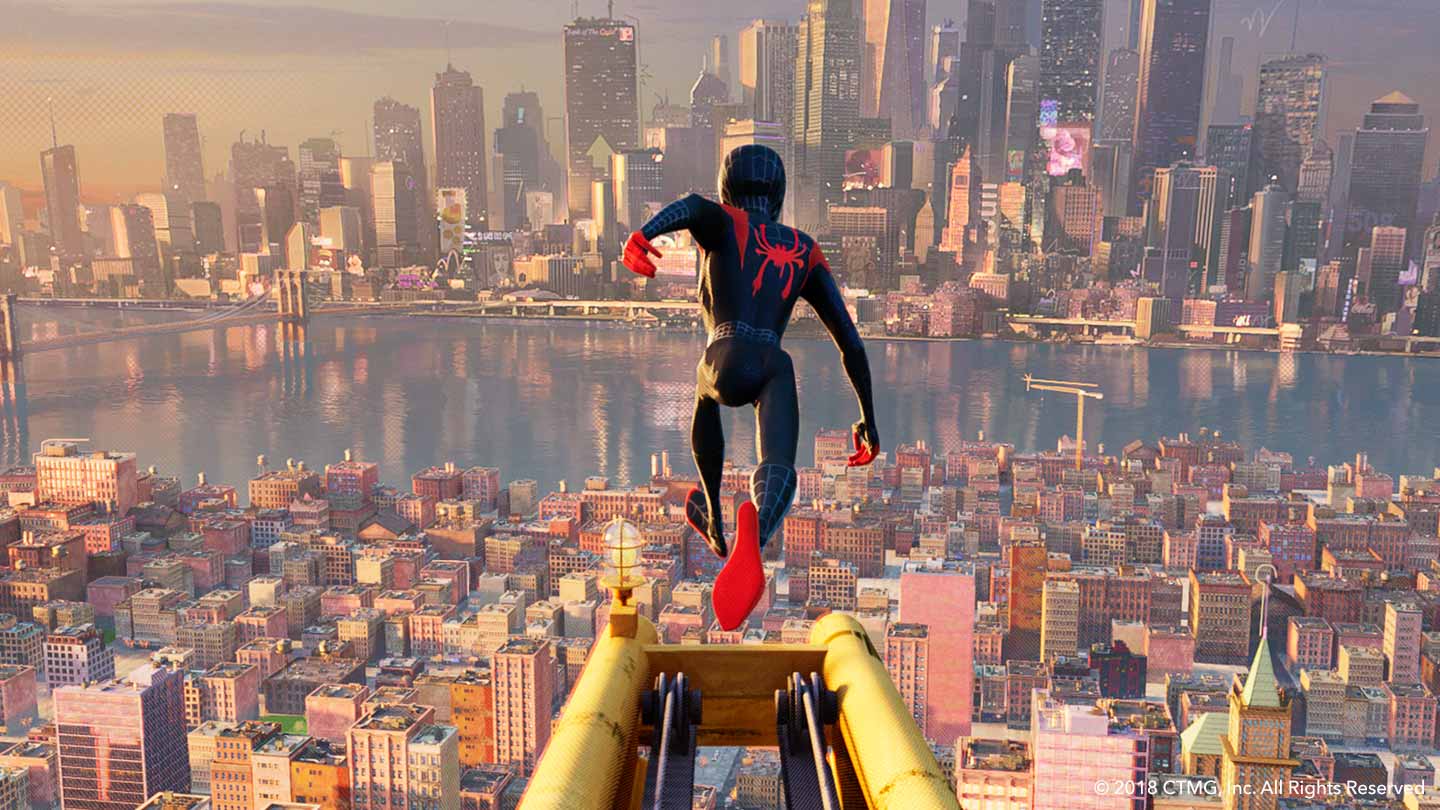
Living in a 3D world
3D lighting and cinematography differ greatly from second animation. This is mainly due to bigger budgets and a larger amount of resources which are bachelor for 3D animators. Plus, 3D animation opens its doors to a whole host of different styles and artwork, all of which crave alternate lighting and production processes.
Blitheness created with CG techniques most frequently results in the very familiar styles of studios like Pixar, which leans heavily on the cinematography principles discussed in our previous article. Through advancements in modern rendering engines and specialized technologies, computer animation tin can also result in what have previously been viewed as 2d styles.
Prime examples are Spider-Man: Into the Spider-Poesy from Sony Pictures Blitheness and many anime productions produced in Japan for SVOD. Regardless of creating 2nd or 3D aesthetics, the consistent use of cinematography lighting principles is guaranteed.
In this mode, lighting 3D animation can be a lot like lighting a alive-action set up. The departure is that lighting artists accept more than freedom to be creative and build on a scene, non being bound by the physics of light.
Just take the Land of the Dead from Pixar's Coco as an example. The visual masterpiece features over 8,000,000 lights, 27 meg objects and 200 million shading points. Information technology was a technically aggressive marvel just it paid off, as the animators were able to create a magical and colorful land which wouldn't take had the same issue or effect if it was 2D or alive-activeness.
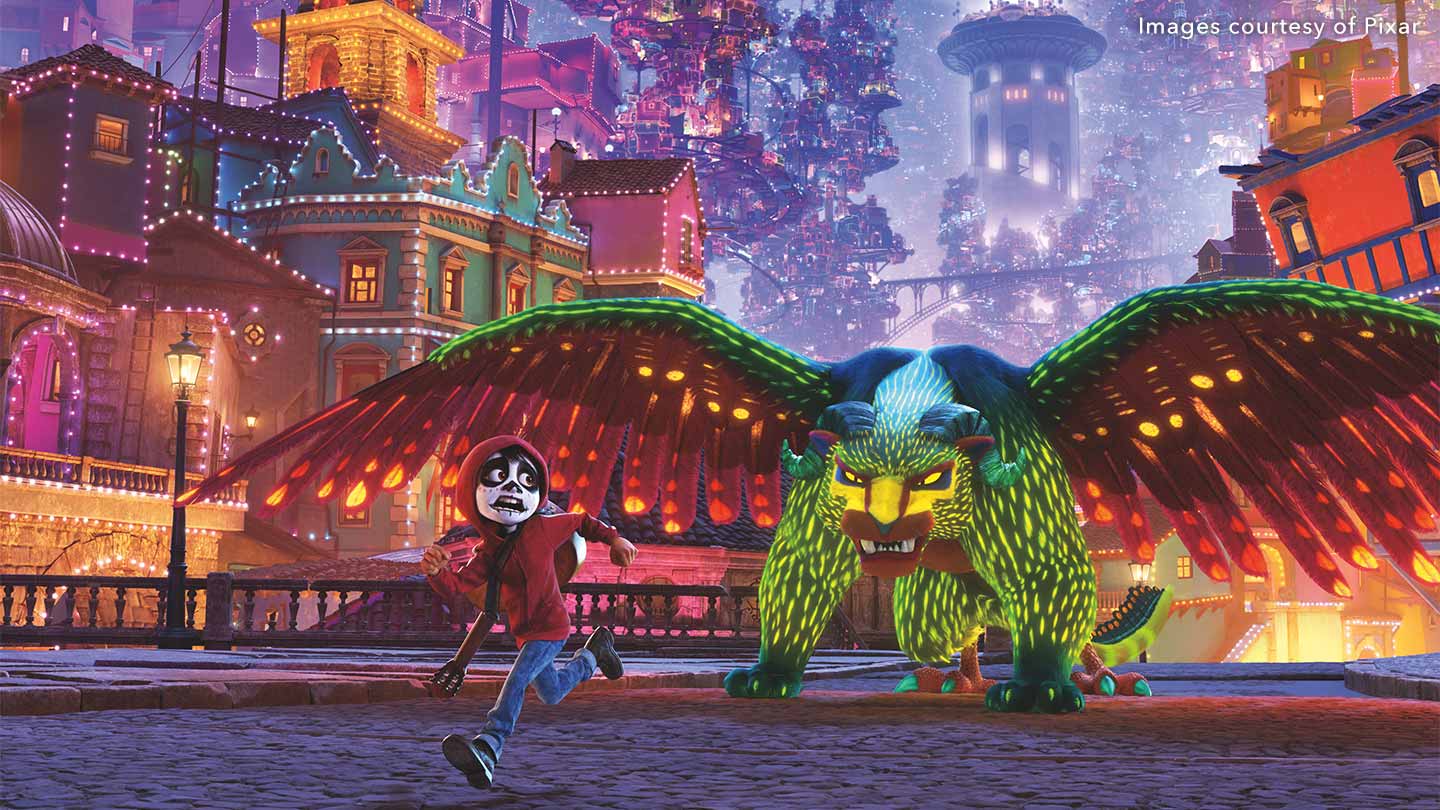
The vastness and colors of the Land of the Dead leaves not just Miguel, but audiences, awestruck at the beauty of the fictional country. It being made up of several dissimilar lite sources from candles and streetlights to lights on both the inside and exterior of the buildings. The cinematography seen hither is vital every bit it is this that gives life to the earth, and more importantly, brings a joyful and bright temper to the Land of the Dead.
To attain this, the animators used a Color Script—something used frequently in blitheness production—to keep track of the dissimilar colors of a scene. A color script takes a shot from each scene and allows filmmakers to map out the colour, lighting and emotional beats of the plot. Usually, certain colors are used for specific characters or to create a desired mood at certain points within the story.
Using colour scripts is an important part of making animations, as it allows artists to know how the viewers are meant to be feeling and enhance these emotions. Given that an animated movie is lit by teams of talented lighting artists working in parallel across large parts of the moving picture vs a smaller defended live-activity squad working together at each stage. The color script facilitates the consistency and vision of the cinematography.
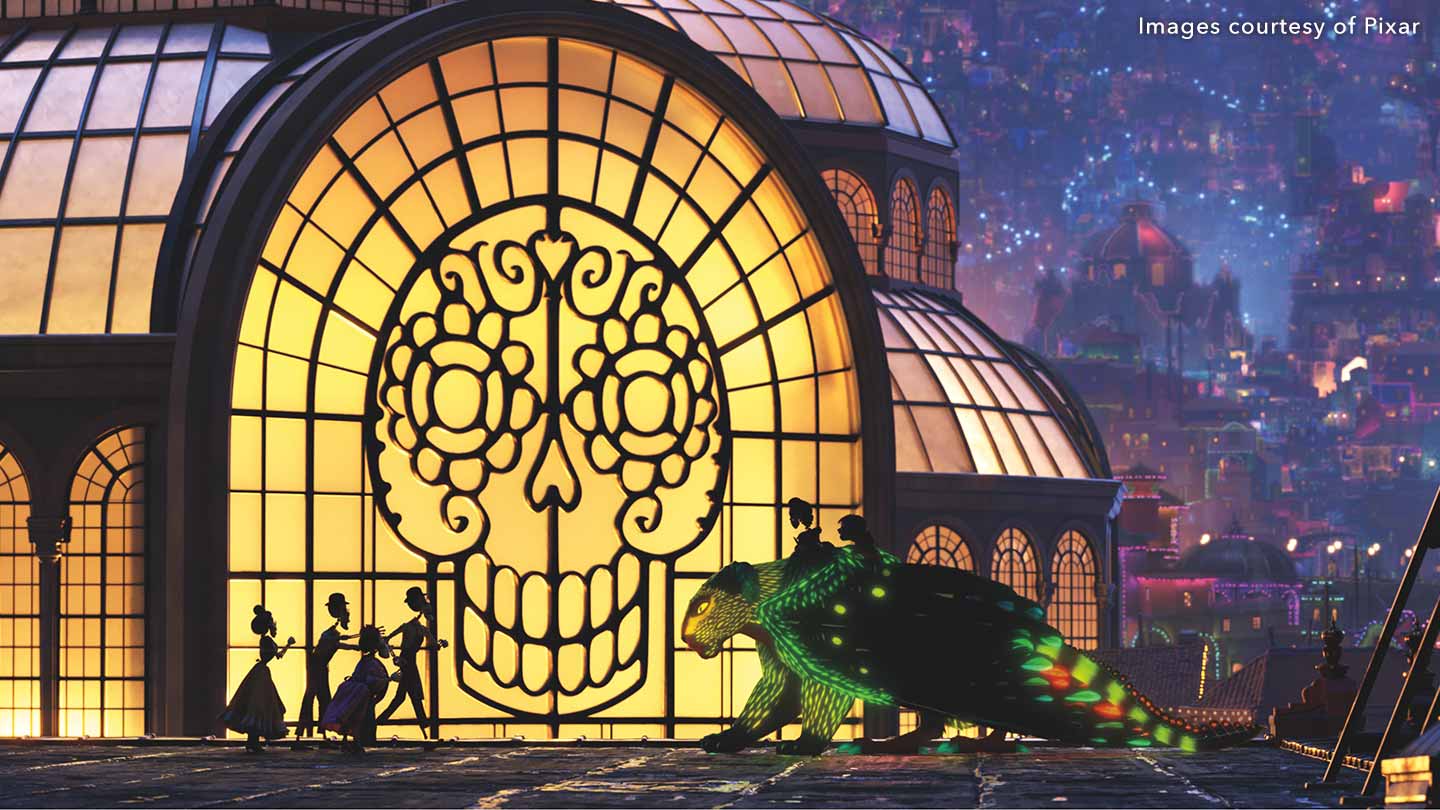
With neat fashion, comes neat responsibility
What's more, 3D animation tin besides pave the way for more stylized blitheness, allowing for greater experimentation with the lighting and cinematography.
With Spider-Man: Into the Spider-Poetry , the team wanted to requite Spider-Man a new, unique look to accompany the new character. For this, they took inspiration from old-style comic books, adding 2nd layered inclines on top of the 3D elements to give the picture show a more hand-drawn look.
To heighten the style farther, the team used comic-volume techniques when lighting the motion picture such as half-toning, which uses white dots to create color and gradients, and hatching to create shadows. Both of these techniques added further depth and definition to the characters and backgrounds, whilst also maintaining the manner of the picture show and its awarding of cinematography. It'due south due to these finite details that you can pause the film at whatsoever bespeak, and it volition look similar a frame from a comic book.
A primal element of Spider-Man: Into the Spider-Poesy is its use of colors, and the emotion information technology bestows on the audience. Throughout the film, these slowly change, starting with more naturalistic colors, light and set to give the audience something they can relate to. They can emphasize with Miles and his mean solar day-to-day life in Brooklyn. But, as the story progresses so does the vividness of the color palette which becomes increasingly more vibrant equally more superhero elements are introduced. It sees a modern have on the apply of bright and assuming colors seen in traditional comic books.
In the climactic action scene, it's an nearly psychedelic moment, full of color and craziness as the audience is fully immersed into the superhero globe. The color influences the journeying that both Miles and the audience take throughout the film, with the cinematography being a vital role of immersing the audience. These techniques are unlike any other used in a Spider-Man blitheness before and is what makes it truly unique.
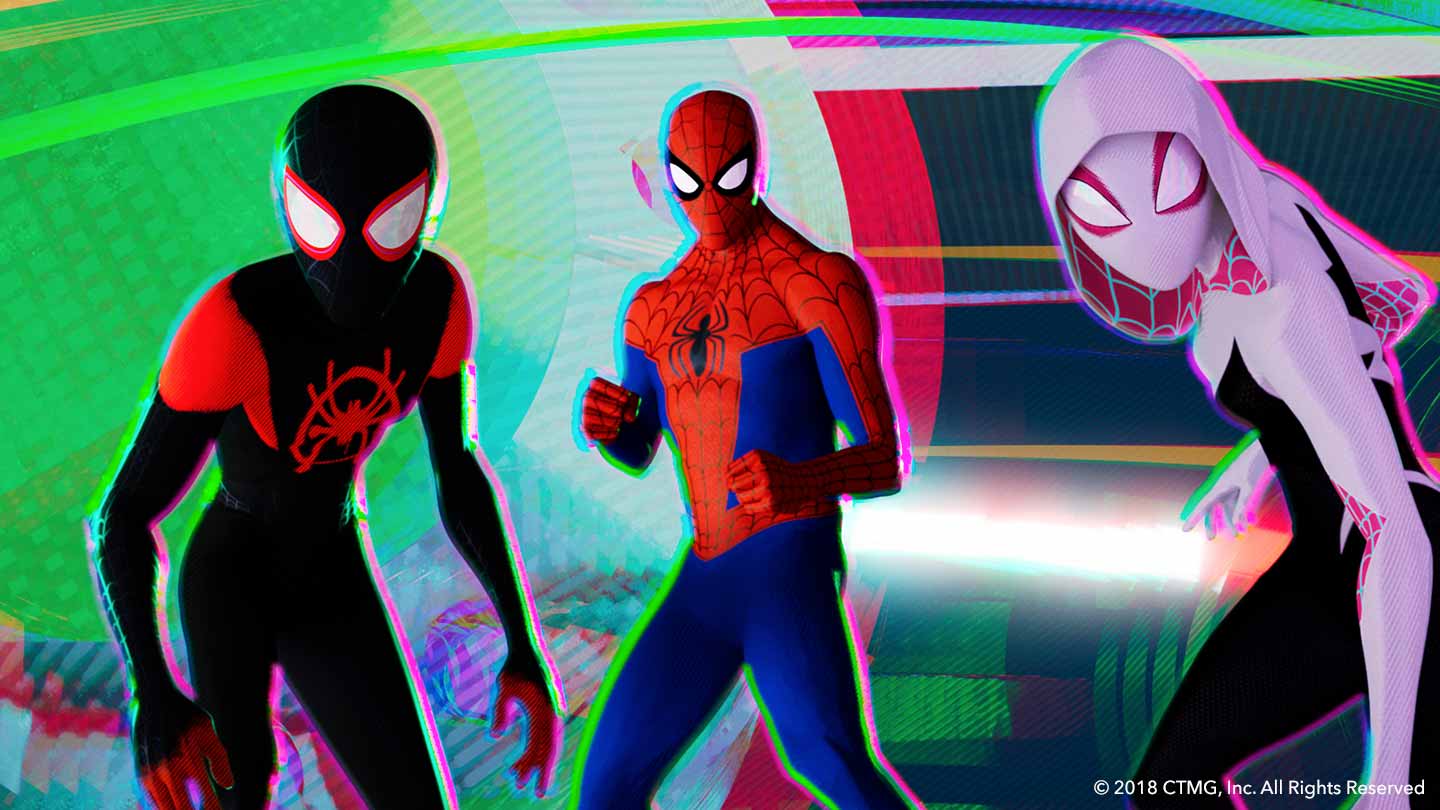
What too makes Spider-Man: Into the Spider-Verse unique is its utilise of several different styles of animation in 1 picture. While it perfectly highlights the differences in animation way, lighting these characters proved technically challenging—especially when they were all in one shot. In particular, the Noir Spider-Man was the hardest to light every bit the team had to be clever with their utilize of light as it was a blackness and white carton, inspiration for which came from the archetype Film Noir genre.
On the flip side of this is finish motion which is a completely unlike discipline altogether. It involves building concrete models for all the characters and sets by paw, with cinematography principles applied when filming each private frame. Leading stop motion studios like Laika rely on CG to heighten their movies with digital characters, set extensions and artificial skies. This creates an interesting alloy of digital and concrete cinematography techniques to evangelize the squad's creative vision putting studios like Laika at an interesting intersection of VFX and animation.
Films like Kubo and the Two Strings compile puppetry, VFX and on-ready techniques together. It brings another unique course of 3D blitheness into the mix, proving to be technically challenging in its ain way. Information technology also allows for a beautifully private style of cinematography, the concrete and the virtual working together to evoke audition reaction.
The use of physical lights and cameras creates a style bound past physics but with the total suite of cinematography techniques available in live-action. Lens choice, framing, and use of light: intensity, color, and quality for the foundation of each frame. Then the VFX and digital aspects expand the world that couldn't be captured with a concrete camera.
Yet, the cinematography techniques used for the filming of the puppets extend into the digital realm and can exist enhanced with CG's ability to break physics for the sake of art direction, while also honoring the path started with physical cinematography. In the opening scene of Kubo and the Two Strings, it combines all these together to claw the audience'south attention and make the outset moments in the motion picture emotionally gripping.
Technology has expanded what is possible with terminate motility animation. At the core, stop motility remains the perfect blend of live action cinematography and blitheness, the 2 techniques intertwined and crafted a single frame at a time.
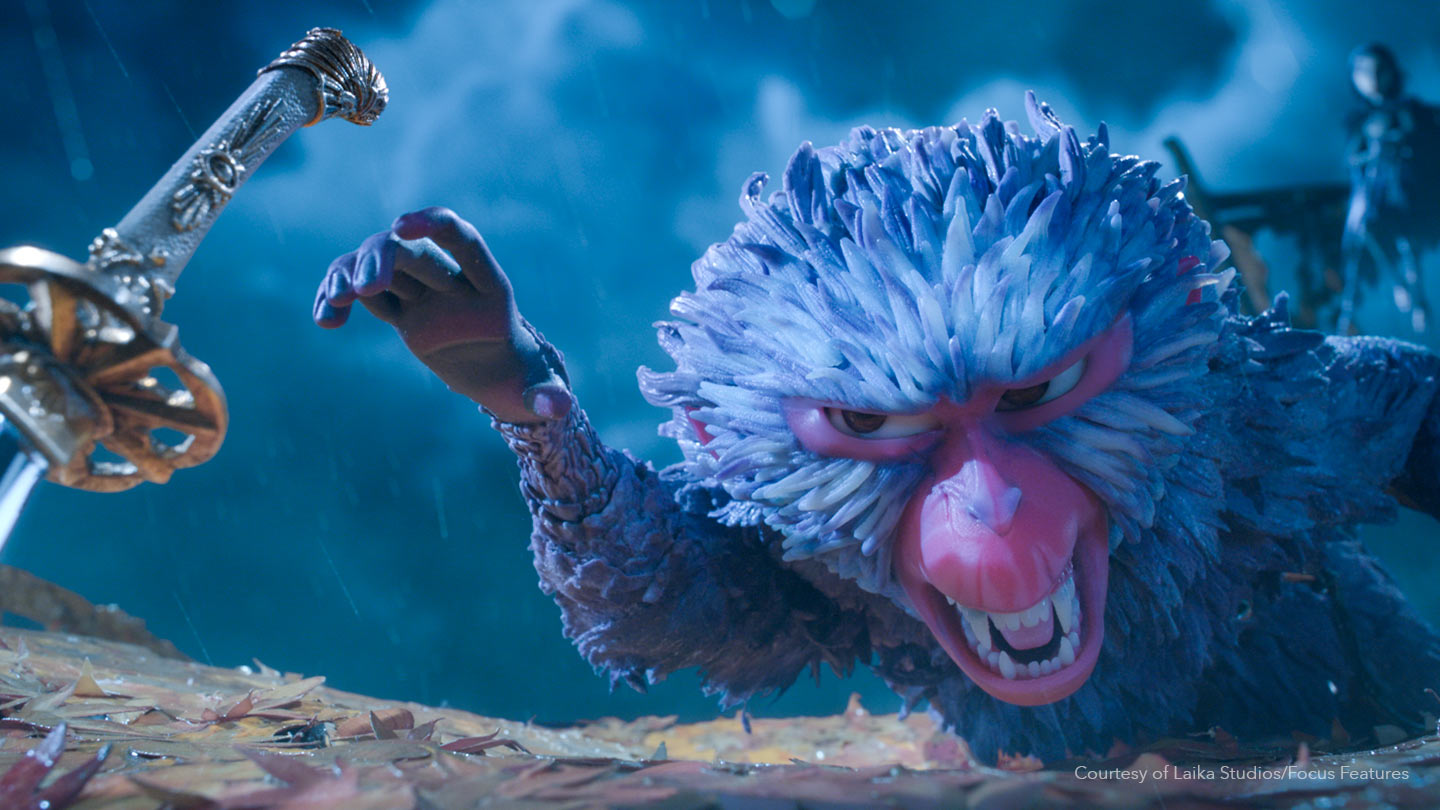
Animating the future
Looking through the progression of the utilize of cinematography in animation, information technology'south interesting to run across how it has been able to develop cheers to bigger budgets and technological advances. While 2D has come into its element, with filmmakers existence able to produce cinematic animation that wouldn't accept been possible in early on animation, 3D is branching into new styles and pushing the boundaries of cinematography and lighting.
As technology continues to advance and artists are able to spend more fourth dimension being creative, it's clear that the hereafter of animation volition go along to bring beautifully animated worlds to our screens. With lighting and cinematography evolving alongside it and bringing new, more stylized films to audiences.
Notice the lighting tool of option
Endeavor Katana for free at present
Source: https://www.foundry.com/insights/film-tv/lighting-in-animation
0 Response to "know draw by hand before 3d animation"
Post a Comment